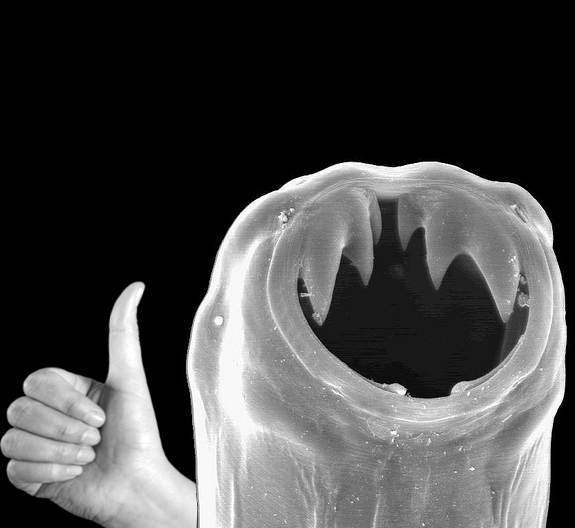Worms linked to COVID help
 Hookworms could offer protection from severe COVID-19 symptoms.
Hookworms could offer protection from severe COVID-19 symptoms.
Prior infection by a parasitic hookworm has been shown to protect mice from severe SARS-CoV-2 disease, offering a potential explanation as to why certain human populations seemed to fare better during the height of the COVID-19 pandemic.
“This work stemmed from an observation that certain regions in the world didn’t fare as badly from the early days of the pandemic as you would expect,” says Malaghan Institute Postdoctoral Research Fellow Dr Kerry Hilligan.
“Countries throughout Africa and Asia were reporting fewer cases of severe infections, such as hospitalisations or death, much less than the rest of the world. This was the case even when accounting for some confounding factors in the data and lower reporting rates.
“What’s interesting is that these regions strongly correlate or overlap with areas where hookworm infections are endemic – consistently present within the population.
“We think that perhaps this endemic infection by hookworms is causing a population-wide ‘interference’ in the establishment of more severe SARS-CoV-2 viral infections,” Dr Hilligan said.
‘Infection interference’ is a term used to describe the observation that in some cases people don’t get sick from more than one infectious organism at a time.
This was first described for viruses in the 1960s, where it was observed that one viral infection can be accompanied by a small grace period before a person can catch something new.
Most recently the world has seen this effect in the COVID-19 pandemic, where it is thought that people recovering from a SARS-CoV-2 infection have a few weeks of relative immunity from the other respiratory viruses (RSV, influenza) before they become susceptible again.
The reasons for this phenomenon are not yet fully understood, but are of particular interest to Dr Hilligan.
“It’s generally accepted that as an infection activates and stimulates the immune system, there’s the additional benefit of this stimulation excluding or preventing other organisms from gaining a toe hold,” says Dr Hilligan.
“What is really interesting to explore is that this effect seems to hold true regardless if it’s a virus, bacteria or a parasite in the case of Covid-19.
Her recent collaborative study looked at hookworm infection in the lungs of mice, as their immune system and cell biology closely mirrors humans’.
The collaboration found that the mice infected with hookworm were less likely to develop severe COVID-19 symptoms and recovered from the infection much more quickly than their counterparts, even after the worms were cleared from the body.
Looking more closely at what was going on at a cellular level, the study observed that the hookworms were affecting a transformational change to specific type of lung-resident immune cells called macrophages.
“Post-helminth infection we could see a stark difference at the transcriptomic level – the level at which different genes are switched on or off – between macrophages that have been exposed to helminth infection and those that haven’t,” says Dr Hilligan.
The result was that these helminth-affected macrophages were much better at raising the alarm to other infectious threats – in this case the COVID-19 virus.
They did this by secreting specific chemical compounds that recruit other immune cells called CD8 T-cells, which specialised in removing viruses, to the site of the infection much faster than the control group.
“We found the recruitment for these CD8 T-cells, which are essential for viral responses, were boosted. Thanks to these modified macrophages, the T-cells came into infected tissue faster and cleared infection faster, which resulted in much less severe disease symptoms,’ Dr Hilligan says.
“What’s more, this effect seems to be long-lasting, with the macrophages retaining this very strong ability to recruit and activate CD8 T-cells long after the hookworm has been cleared from the body.”
While the research is preclinical and yet to be translated to humans, the researchers are currently focused on better understanding these macrophages and what the hookworms are doing to them to drive such a change in behaviour.
“Looking forward we want to understand the signals that bring in these T-cells to the lung,” Dr Hilligan says.
“Leading on from that, we want to understand more about what the worm is doing to create these specialised macrophages, and whether we can replicate this effect, without the need for the worm as an intermediary.”
The full study is accessible here.








 Print
Print